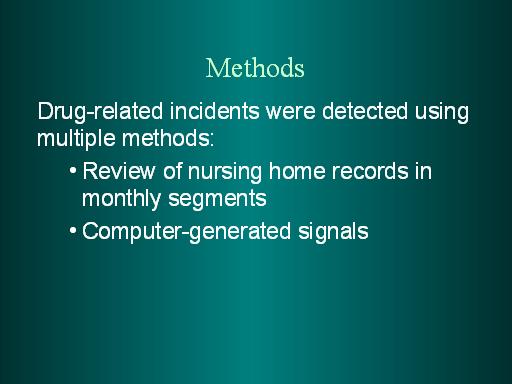Methods (continued)

Drug-related incidents were detected using multiple methods:
- Review of nursing home records in monthly segments
- Computer-generated signals
Notes:
Every six weeks, an investigator reviewed charts on all patients looking for:
changes in medications and discontinuations specific medications which might be used to treat an ADE
unusual lab values changes in symptoms and events which might be linked to an ADE—lethargy,
confusion, bleeding, falls, GI problems
hospitalizations and ER visits
Log books left at each nursing station—very few events reported that way
Classification process— no explicit rules
determining whether ADE
required explicit link to drug
included rating of confidence on 6 point scale—only used those with upper levels
assigning level of severity range: fatal, life-threatening, serious, significant
examples: neuropsych event—if oversedation significant, if delirium serious; hemorrhagic event—if a bleed significant, if
required transfusion or hospitalization serious; falls always serious determining preventability
range: no error, definitely not preventable, probably not preventable probably preventable, definitely preventable
ex of preventable: resident has a documented prior allergy to a drug; resident is given the drug and has an ADE—called "preventable" because allergy was known (even if not easily found in the chart)
 Previous Slide Contents Next Slide
Previous Slide Contents Next Slide 

